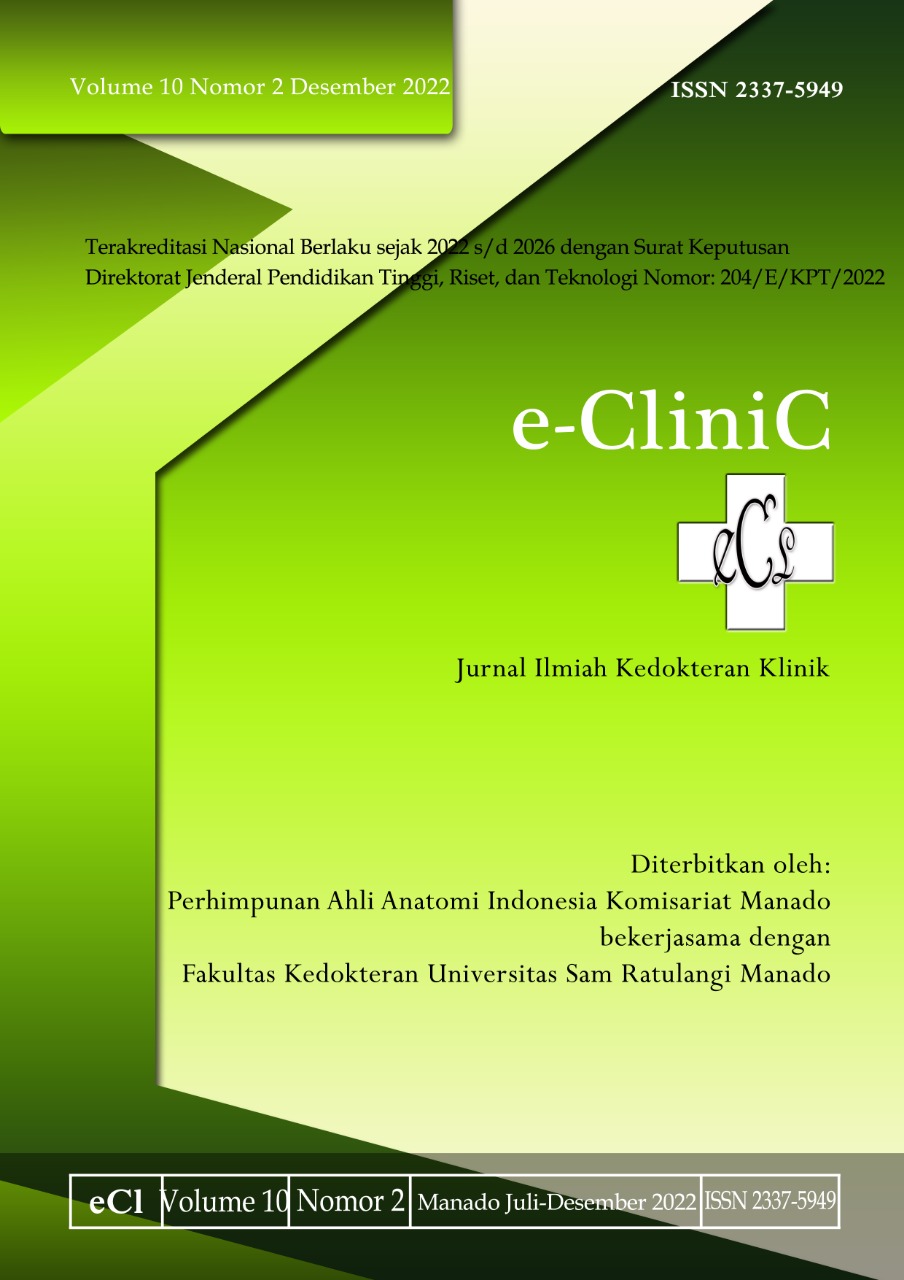Risk Factors Associated with Postoperative Outcome of Congenital Anomalies
DOI:
https://doi.org/10.35790/ecl.v10i2.39161Abstract
Abstract: Mortality rate of newborns with congenital abnormalities worldwide is still high in the first four weeks after birth every year. This study aimed to obtain the profile of patients with congenital anomalies related with mortality after surgery at the Pediatric Surgery Department, Prof. Dr. R. D. Kandou Hospital, Manado, Indonesia. This was a descriptive and retrospective study. There were 98 samples during 2019 to 2021. Dependent variable was postoperative mortality outcome and independent variable risk factors were sex, gestational age, birth weight, and length of stay. Data were analyzed using univariate method. The results showed that postoperative death was 27.6%, and sex ratio was equally distributed (male 51%; female 49%). Gestational age was pre-dominanly aterm 77.5% vs preterm 22.5%. Birth weight of ≥2500 g was 77,5% and low birth weight (<2500 g) was 22.5%. Hospitalitation length of stay probably less than two weeks was 82.7%. Pediatric surgical congenital anomalies were as follows: Hirchsprung Disease (15.1%), anorectal malformation (41.7%), lateral inguinal hernia (11.3%), diaphragm hernia (3.1%), omphalocele (2.1%), gastroschisis (2.1%), undescended testis/UDT (4.1%), invagination (4.1%), duodenal atresia (3.1%), ileojejunal atresia (4.1%), esophageal atresia (5.1%), biliary atresia (1%), and mechanical bowel obstruction (3,1%). In conclusion, in the last two years, pediatric surgery services in surgical congenital anomalies had overall mortality rate of 27,6% without sex predominantly. Most patients were aterm babies with normal birth weight and relatively short length of stay.
Keywords:Â congenital anomalies; postoperative outcomeDownloads
Additional Files
Published
How to Cite
Issue
Section
License
COPYRIGHT
Authors who publish with this journal agree to the following terms:
Authors hold their copyright and grant this journal the privilege of first publication, with the work simultaneously licensed under a Creative Commons Attribution License that permits others to impart the work with an acknowledgment of the work's origin and initial publication by this journal.
Authors can enter into separate or additional contractual arrangements for the non-exclusive distribution of the journal's published version of the work (for example, post it to an institutional repository or publish it in a book), with an acknowledgment of its underlying publication in this journal.
Authors are permitted and encouraged to post their work online (for example, in institutional repositories or on their website) as it can lead to productive exchanges, as well as earlier and greater citation of the published work (See The Effect of Open Access).







